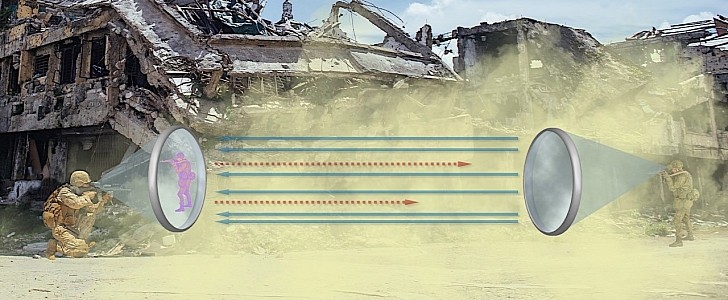Having the ability to blind the enemy while conducting military operations can at times prove vital to the outcome of a battle. There are a number of ways to do this, depending on what you intend to blind and the advantage you intend to get, and one such way is the use of so-called obscurants.
Defined as materials used to hinder visibility, obscurants are widely used by the U.S. military, and they come in a variety of forms. Whatever their composition, these materials have one nasty trait: they blind friendly troops as well and, in some cases, as for instance when it comes to the metallic flakes used to counter infrared systems, can pose a threat to a friendly solder’s health.
Seeking to find some type of material that can be used to blind only the enemy, and not America’s own troops, the maker of all military high-tech things, DARPA, announced last week the launch of the Coded Visibility program.
The goal of the initiative is to “develop tailorable, tunable, safe obscurants that provide warfighters with an asymmetric advantage, enhancing their visibility while suppressing adversary vision and detection systems.”
On October 21, DARPA will hold a Proposers Day webinar meant to further detail what exactly that means. In essence though, the tech should be capable of impairing visibility through whatever means from only one direction, that of the enemy, while allowing friendlies to see things as if nothing were dispersed in the area.
According to Rohith Chandrasekar, program manager in DARPA’s Defense Sciences Office, this is something called passive asymmetry, and the tech should operate not unlike privacy windows. Active asymmetry, which is the capability to adapt the obscurant’s properties during a mission, will also be explored as part of the program.
Although it doesn’t go into details yet, DARPA says it is using for new ways to use media, plasmonics, metamaterials, light-matter interactions, biochemical compounds, and large-scale plume modeling for the task at hand.
We’ll get back on the story as soon as more information becomes available.
Seeking to find some type of material that can be used to blind only the enemy, and not America’s own troops, the maker of all military high-tech things, DARPA, announced last week the launch of the Coded Visibility program.
The goal of the initiative is to “develop tailorable, tunable, safe obscurants that provide warfighters with an asymmetric advantage, enhancing their visibility while suppressing adversary vision and detection systems.”
On October 21, DARPA will hold a Proposers Day webinar meant to further detail what exactly that means. In essence though, the tech should be capable of impairing visibility through whatever means from only one direction, that of the enemy, while allowing friendlies to see things as if nothing were dispersed in the area.
According to Rohith Chandrasekar, program manager in DARPA’s Defense Sciences Office, this is something called passive asymmetry, and the tech should operate not unlike privacy windows. Active asymmetry, which is the capability to adapt the obscurant’s properties during a mission, will also be explored as part of the program.
Although it doesn’t go into details yet, DARPA says it is using for new ways to use media, plasmonics, metamaterials, light-matter interactions, biochemical compounds, and large-scale plume modeling for the task at hand.
We’ll get back on the story as soon as more information becomes available.







